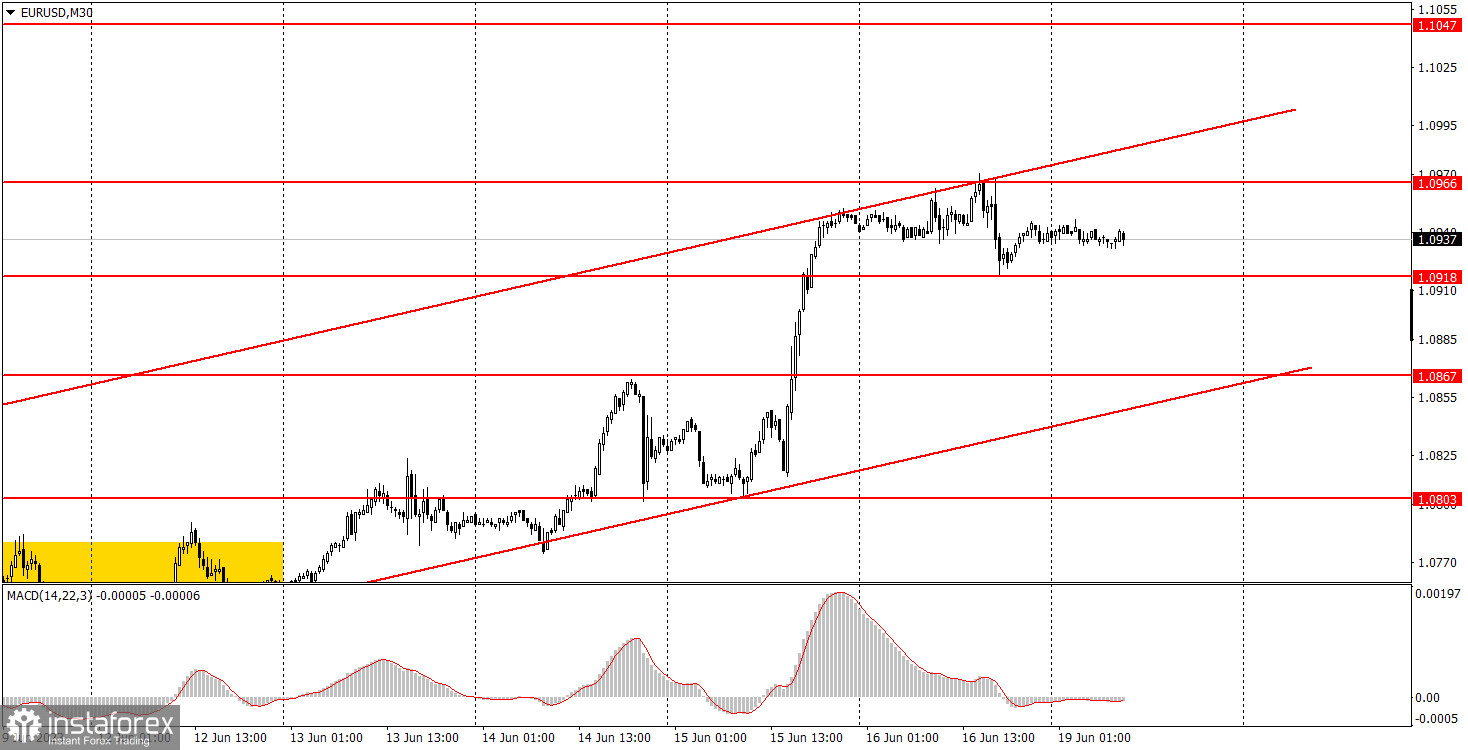Analysis of macroeconomic reports:

The new trading week is expected to start quite dull. There are no significant reports lined up for the US, the European Union, or the UK. Later in the week, several important reports are slated for release, but most of them will be in the second half of the week. Monday is practically empty, except for a few speeches by European Central Bank officials. Therefore, today we expect calm movements, with the possibility of a flat or correction against the trend for both currency pairs.
Analysis of fundamental events:

Among the fundamental events on Monday, we can highlight the speeches of ECB Monetary Committee representatives Isabel Schnabel, Luis de Guindos, and Philip Lane. Take note that de Guindos is the vice president of the ECB, and Philip Lane is the chief economist of the central bank. Their comments could turn out to be important for the market. After last week's events (ECB meeting), the market started to believe more in the idea that the key interest rate in Europe will rise for a longer and stronger period. This implies growing hawkish expectations and sentiments, which could support the euro. We doubt that the ECB will raise the rate more than 4.25%, but it is important to know what the market thinks. If we receive new hints or explicit statements about the readiness to continue raising the rate both in summer and autumn, it could support the euro on Monday and throughout the week.
General conclusions:
There will be few important fundamental and macroeconomic events on Monday. The thing is, de Guindos, Lane, and Schnabel may not comment on the ECB's monetary policy, so we might not necessarily receive new significant information today. On the other hand, they may reiterate the information that ECB President Christine Lagarde already voiced last week.
Basic trading rules:
1) The strength of the signal depends on the time period during which the signal was formed (a rebound or a break). The shorter this period, the stronger the signal.
2) If two or more trades were opened at some level following false signals, i.e. those signals that did not lead the price to Take Profit level or the nearest target levels, then any consequent signals near this level should be ignored.
3) During the flat trend, any currency pair may form a lot of false signals or do not produce any signals at all. In any case, the flat trend is not the best condition for trading.
4) Trades are opened in the time period between the beginning of the European session and until the middle of the American one when all deals should be closed manually.
5) We can pay attention to the MACD signals in the 30M time frame only if there is good volatility and a definite trend confirmed by a trend line or a trend channel.
6) If two key levels are too close to each other (about 5-15 pips), then this is a support or resistance area.
How to read charts:
Support and Resistance price levels can serve as targets when buying or selling. You can place Take Profit levels near them.
Red lines are channels or trend lines that display the current trend and show which direction is better to trade.
MACD indicator (14,22,3) is a histogram and a signal line showing when it is better to enter the market when they cross. This indicator is better to be used in combination with trend channels or trend lines.
Important speeches and reports that are always reflected in the economic calendars can greatly influence the movement of a currency pair. Therefore, during such events, it is recommended to trade as carefully as possible or exit the market in order to avoid a sharp price reversal against the previous movement.
Beginners should remember that every trade cannot be profitable. The development of a reliable strategy and money management are the key to success in trading over a long period of time.





















